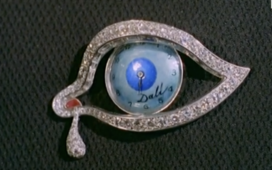Orson Welles directed the greatest movie ever made, Citizen Kane, at age 25, with only a limited knowledge of the medium. When Paul McCartney was 25, he, along with his fellow Beatles, released the era-defining album Sgt. Pepper’s Lonely Hearts Club Band. By age 29, Pablo Picasso revolutionized modern art by developing cubism.
If hearing such stories sets off an existential panic attack because you squandered your 20s with too much reality TV and graduate school, then take heart — you’re not necessarily a failure.
As Adam Westbrook points out in his video essay The Long Game, Leonardo da Vinci was a loser before he painted The Last Supper at age 46. As a youth, Leonardo planned grandiose projects that he wouldn’t be able to finish. This, of course, did little for his reputation and even less for his career as a freelance artist. But he continued to work, eking out a living by enduring the demands of picky, small-minded clients, and, through this lean period, Leonardo emerged as a great artist. Robert Greene, in his book Mastery, calls this period “The Difficult Years.” Every successful creative slogs through some form of the Difficult Years, even child prodigies. Mozart just went through his struggles at a time when most children are learning to read.
In other words, “genius” has less to do with innate talent than just doing the work. Of course, that isn’t nearly as good a story as that of the romantic genius. But it is encouraging for those of us who haven’t quite yet won that MacArthur grant.
You can watch Westbrook’s video essay in various parts above.
Related Content:
John Cleese on the Origin of Creativity
Jonathan Crow is a writer and filmmaker whose work has appeared in Yahoo!, The Hollywood Reporter, and other publications. You can follow him at @jonccrow.















